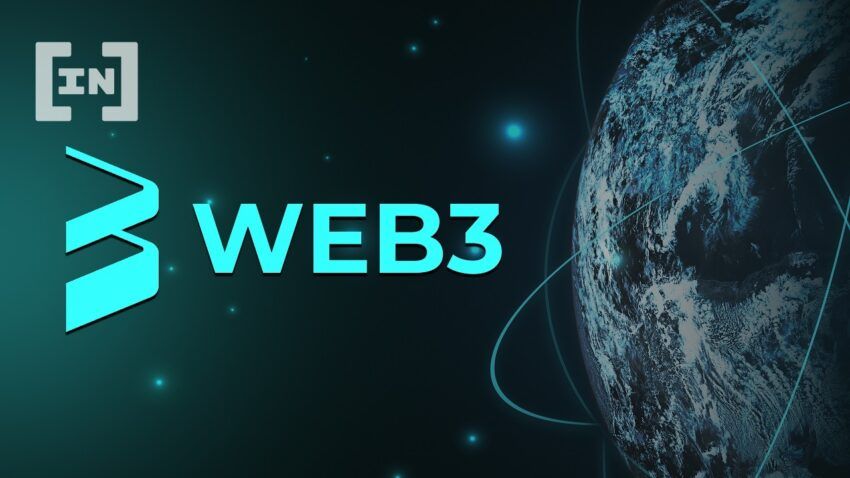Storage is a big issue in Web3. The human race is responsible for an explosion of data production, and that data has to live somewhere, says Dr. Max Li, CEO Computecoin.
These days data mostly ends up stored on our phones, hard drives, or cloud storage services. Tools like Dropbox and Google Drive have made it easier than ever before to upload and access computer data from anywhere in the connected world.
But all of these different solutions suffer the same primary drawback: they are centralized, and centralization comes with certain fundamental vulnerabilities. What happens if you lose your hard drive in a house fire? What happens when Dropbox servers suffer some network outage?
Furthermore, how much do you trust that a third party like Dropbox is protecting your privacy as opposed to abusing it?
Storage and Web3
“Web3” is the term commonly heard flying around conversations about the shift in our relationship with the internet. Where the original World Wide Web was mostly a read-only experience for the end-user, Web2 ushered in a read-write experience. Social media made it possible for people to cultivate and interact with their own audience. Powerful media and marketing tools are available to anyone who wants them.
Now crypto principles and blockchain technology are heralding Web3 as a “read-write-own” experience. In this paradigm, it’s not only possible to track ownership of virtual assets but to buy and sell those assets on an open market.
The evolution of Web3 is driven by decentralized blockchains that can offer greater accessibility to cloud storage without any of the güvenlik risks. In a Web3 storage paradigm, files are stored on a network of computers rather than on a single server. With help from encryption, data mining resistance, and peer-to-peer networking, Web3 principles offer a more secure, breach-resistant storage solution.
Web3 hafızası is also significantly cheaper than traditional cloud storage options. With no central authority controlling the platform, users are free to choose their own storage providers, like Storj, Ankr, or my own company Computecoin.
How Storj does it
Storj is a key player in the decentralized storage space and is comparable to Amazon S3 in terms of features and functionality. However, while Amazon Simple Storage Service (Amazon S3) costs $22/TB/mo on average, Storj services cost only $4/TB/mo.
Storj can help both Web2 and Web3 companies save on their storage costs. For example, media and entertainment companies might use Storj to serve their content, or machine learning companies can use it to host their data more cost-effectively.
How Ankr does it
Ankr is on a mission to make blockchain technology more accessible to developers. The company provides developer tools and infrastructure services that optimize the blockchain experience. Some of Ankr’s notable partners include Binance, Çokgen ve çığ.
The distinguishing feature of Ankr’s approach is its focus on the compute layer. The company’s servers are located around the world on bare metal, which provides faster speeds and more reliable service.

How Computecoin does it
The Computecoin network aims to provide compute and storage in a decentralized fashion. You might think about it like Amazon Web Services (AWS). But, it doesn’t rely on a central authority like AWS.
AWS currently offers dozens of different services, yet Computecoin plans to replace each one in a decentralized fashion. This would provide the same services currently offered by AWS, but in a more robust, resilient way with reduced downtime. And, it is less prone to malicious hackers.
As companies face high educational and technical barriers that make it difficult to adopt decentralized cloud systems, Computecoin aims to make that process easier and more accessible to all.
Just as Expedia provides an easy end-to-end booking solution that simplifies the process and ensures users a smooth user experience, Computecoin provides an end-to-end computing and storage solution that’s easy and intuitive to use. The aim is to offer reduced costs and increased privacy to compete against traditional centralized providers like Amazon and Google.

Storage and creating a new future for Web3
The web has come a long way since its humble beginnings. We have gone from a few simple pages to a complex, interconnected web of information. But as the web has grown, problems have developed along the way.
From data breaches to overreaching government surveillance, the centralized model of the web has left users vulnerable and exposed. Web3 is the solution. By decentralizing the infrastructure of the web, we can build a more resilient, secure, and private internet.
Yes, it’s about storage. But it’s about the future of the internet at the same time.
Yazar hakkında

Dr. Max Li is the founder & CEO of Computecoin, co-founder of Nakamoto & Turing Labs (N&T Labs), and managing partner of a New York-based VC Aves Lair. He is also an adjunct professor at Columbia University (in the City of New York).
Got something to say about decentralized storage or anything else? Bize yazın veya tartışmaya katılın Telgraf kanalı. Bizi de yakalayabilirsiniz Tik Tok, Facebookya da Twitter.
-
Feragatname
Web sitemizde yer alan tüm bilgiler iyi niyetle ve yalnızca genel bilgi amaçlı yayınlanmaktadır. Okuyucunun web sitemizde bulunan bilgilere göre yapacağı herhangi bir eylem kesinlikle kendi sorumluluğundadır.
Source: https://beincrypto.com/storage-without-centralization-where-will-web3s-explosion-of-data-live/